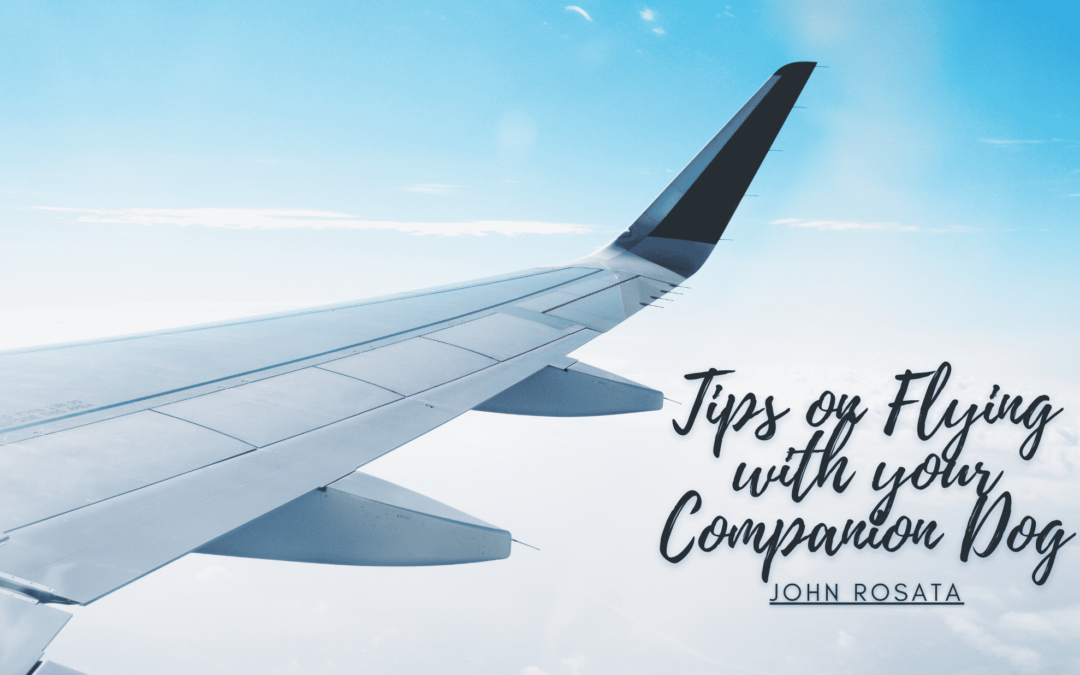If you are a dog owner, the chances are that your furry friend needs to fly with you on occasion. Flying is not always easy for dogs, and it can be stressful for both the dog and the owner. There are several things you can do to ensure that everyone involved has a stress-free flight. We’ll share tips in this article to help you have a safe and enjoyable flight!
Pick a non-stop flight:
The more stops your dog will have to endure, the higher the chances of something going wrong. Pick a director at least a non-stop flight whenever possible. This way, you can save time and energy by not having to transit again through an airport during another leg of your trip!
Avoiding turbulence:
Turbulence is not an unusual thing to happen during a flight. There are many reasons why turbulence happens, but it can be very dangerous for your dog if they do not have enough space in their crate or harness! Make sure that you select flights with minimal turbulence by checking the weather report beforehand and picking safe times of day (early morning or late evening) to fly.
Avoiding extreme temperatures:
It is crucial that you select flights with climates similar to what your dog is used to. If the flight has a stopover in an area where it will be hotter or colder than usual, make sure that your dog and their crate are within range of an air-conditioner or heater, depending on the climate change. Additionally, if you are concerned about temperature changes or turbulence, you can request that a flight attendant check in on your dog periodically throughout the flight.
Avoiding stressing noises:
If possible, avoid flights that will be full of loud passengers and announcements! If you cannot get out of this scenario altogether (for example, when you have a tight connection and cannot delay your flight), make sure that you select an aisle seat so that you can open the crate door if necessary.
Having an alternate plan:
Make sure that all members of the flight crew know how many dogs will be on board and where their crates are. If possible, try not to select a middle seat for your crate so that there is more room for the aisle seats! This way, if there are any issues, you can leave your seat to tend to them. Also, it is always a good idea to have an alternate plan in case anything goes wrong with flights – consider booking hotels or renting cars so that you don’t get stranded at night or in an area where dogs are not welcome.
Have essential items on hand:
Be sure to pack all the essentials for your dog in a carry-on bag! This includes food, water (if required), medications, and anything else that is important or necessary for them during the flight. If you don’t end up needing it because of an uneventful flight, great! But if anything goes wrong, you will be happy that you have it.
Don’t give your pet a sedative:
Many people want to give their dog a sedative when they fly, but this is not recommended. Sedatives can cause respiratory issues if your pet needs to undergo CPR during an emergency situation, and it also inhibits them from being able to signal that something bad is happening.
Have the proper documentation:
Make sure that you have all necessary vaccinations papers for your dog when you are at the airport. If there is any reason why they cannot fly with their current vaccinations, have a note from your veterinarian explaining this so that it does not hold up the line! Be sure to also bring identification for both yourself and your pup in case anything goes wrong or if anyone needs contact information.
